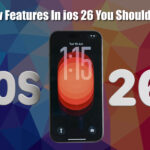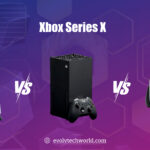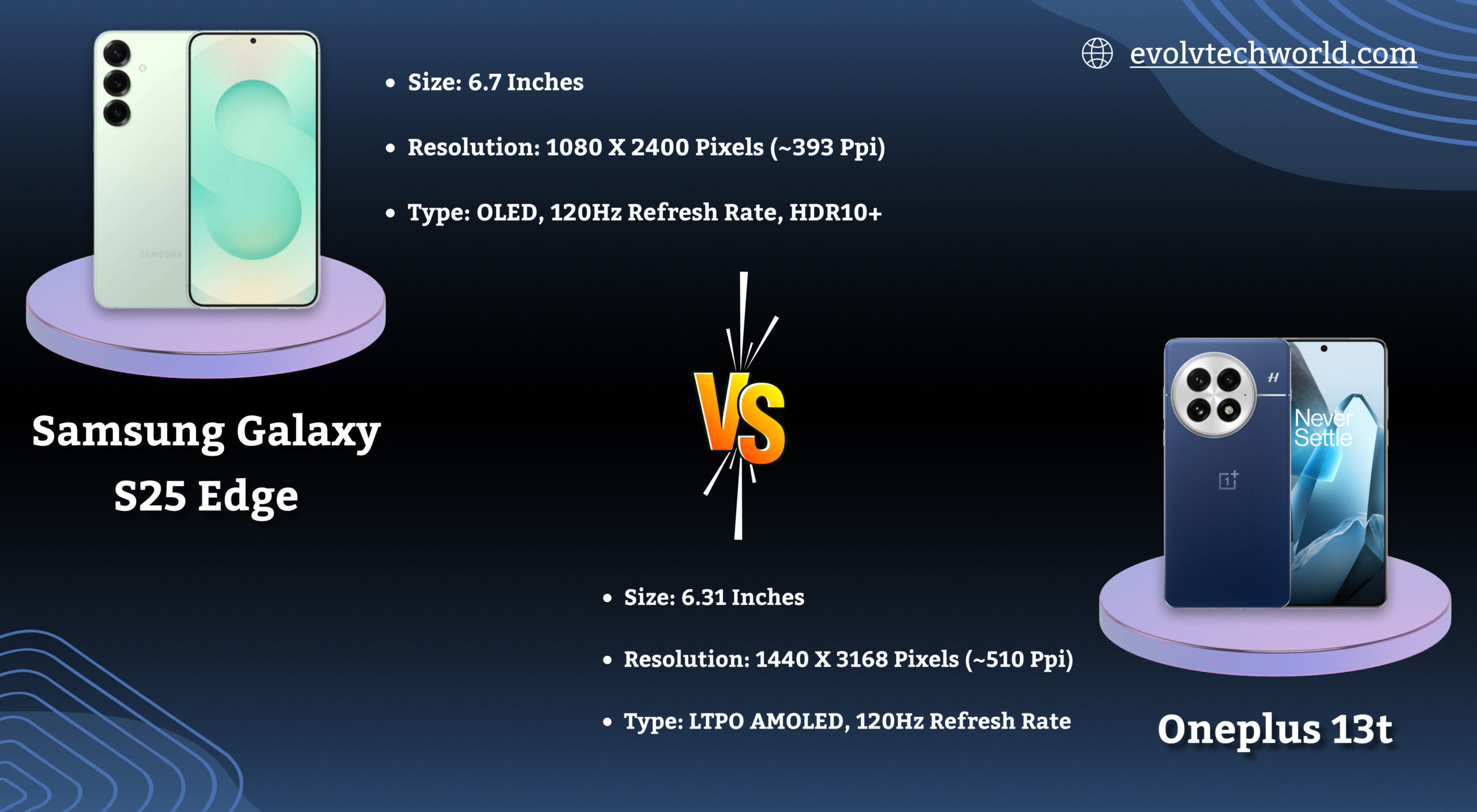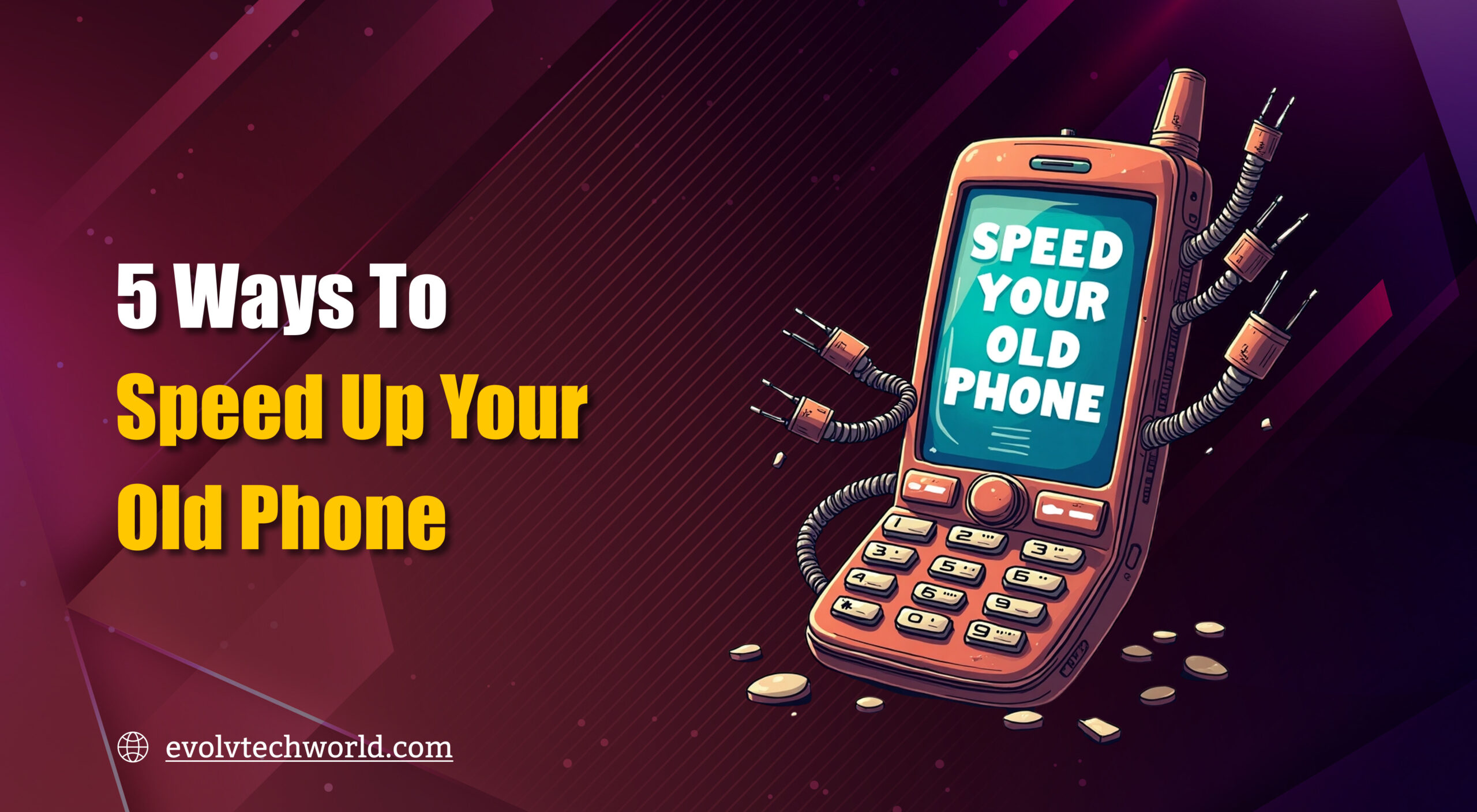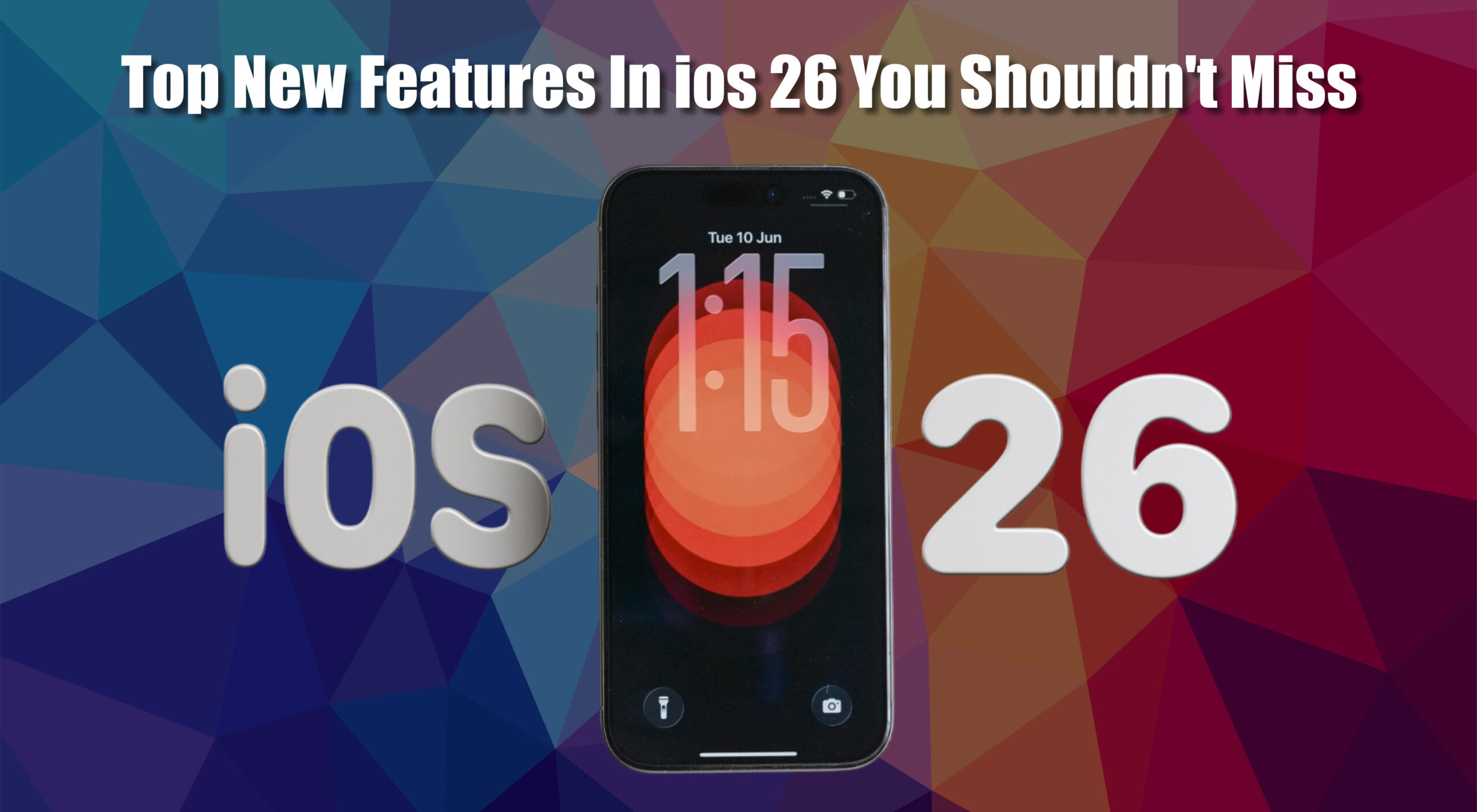Up to May 2025, the Samsung Galaxy S25 Edge and OnePlus 13T are two of the most highly speculated smartphones, each with distinct features focusing on individual needs. The Galaxy S25 Edge prioritizes slim design and high definition imaging, whereas the OnePlus 13T prioritises battery life and slenderness. Below is a comprehensive comparison to enable you to choose the device that best suits your requirements.
Design & Build
Samsung Galaxy S25 Edge:
The Galaxy S25 Edge sets new standards for slenderness and premium touch in a flagship phone. It is just 5.85mm thick and weighs only 163g making it one of the lightest and thinnest top-end phones this year. It boasts a new titanium frame which is both lighter and stronger than aluminum and a Gorilla Glass Ceramic 2 back that provides strength and scratch protection.
Samsung’s trademark curved edge screen makes a comeback adding to the immersive viewing experience. It also boasts IP68 certification which means dust resistance and the capacity to survive in up to 1.5 meters of water for 30 minutes. The slim profile, however, comes with some compromises especially when it comes to internal battery capacity.
Also Read: Top Smartphones Launching in May 2025
OnePlus 13T:
The OnePlus 13T boasts a thicker (8.2mm) and heavier (185g) body making it feel more robust and rugged in hand. Its aluminum alloy construction combined with a matte glass rear, gives it a professional look with improved grip and heat management. While it does not have an official IP rating the construction is strong enough to withstand minor splashes and accidental drops.
OnePlus prioritizes functional design over aesthetics with flat sides and a centered camera module that is easy to use and handle with one hand. Its look is not so much about aesthetics and rather about ergonomics and endurance.
Battery & Charging
Samsung Galaxy S25 Edge:
The S25 Edge has a fairly small 3,900mAh battery tiny by the standards of the day but unavoidable to fit within the ultra-slim frame. Samsung has built-in support for 25W wired charging, which is rather slower than many rivals but still provides reasonable rates for light use.
Wireless charging and reverse wireless charging are available, keeping the phone in top-end class. But users who depend on full day performance or heavy gaming are likely to find themselves reaching for the charger by the end of the evening. Samsung makes up to some extent with power saving AMOLED display technology and in-depth One UI battery optimization.
OnePlus 13T:
The OnePlus 13T excels in power longevity. It boasts a huge 6,260mAh silicon carbon battery with higher energy density than normal lithium-ion batteries. This makes it possible for the phone to last more than a day, even with intensive use like gaming, streaming and multitasking.
The 80W wired charging support makes a full charge within less than 40 minutes, which is great for users requiring quick turnaround. Although it does not have wireless charging, the capacity and speed of charging compensate for it significantly.
Camera Features
Samsung Galaxy S25 Edge:
Samsung outfits the S25 Edge with an eye-popping 200MP primary sensor which puts it among the highest resolution smartphone cameras ever. The sensor gathers rich details and provides high-end pixel binning to enhance low light shooting. It is paired with a 12MP ultra-wide lens for landscape and wide angle photography.
However, the phone does not have a telephoto lens which could be disappointing to users who prefer zoom shots. Higher-end computational photography capabilities such as Samsung’s Pro mode and AI powered night mode, produce sharp, real-world images under various situations.
OnePlus 13T:
The OnePlus 13T has a more evened-out camera arrangement. Its 50MP primary sensor produces dependable performance during daylight and modest illumination, with good color fidelity and dynamic range.
The 32MP front camera, on the other hand is an exemplary feature, particularly for selfie takers and creators. Though it lacks the ultra-high resolution of Samsung’s rear camera, OnePlus has tweaked its image processing to give consistent results, particularly in portrait and video modes. The 13T is also social media share friendly with instant HDR and stabilization functionalities.
Performance & Software
Samsung Galaxy S25 Edge:
Samsung’s high-end phone is powered by the latest Snapdragon 8 Elite chipset, based on a 3nm architecture for enhanced speed and efficiency. It features 12GB of LPDDR5X RAM and up to 512GB of UFS 4.0 storage.
It easily manages multitasking 4K video editing and is high-end gaming smartphone. It comes with Android 15 and One UI 7 a skin that boasts a feature loaded interface and extensive customization. Samsung offers 4 years of major OS updates and 5 years of security patches, providing long term value for users.
OnePlus 13T
OnePlus 13T also relies on the Snapdragon 8 Elite for top-shelf performance in all aspects. With both 12GB and 16GB RAM options and up to 1TB of storage, it meets the requirements of power users who require speed and capacity. OxygenOS 15 powered by Android 15, offers a virtually stock Android experience with limited bloatware, timely updates and simplicity of design. It is particularly favored by technology buffs who value speed, minimalism and developer supportive features such as unlocked bootloaders.
Specifications Comparison
| Feature | Samsung Galaxy S25 Edge | OnePlus 13T |
| Display | 6.7″ AMOLED, 1440×3120 pixels, curved | 6.32″ AMOLED, 1216×2640 pixels, flat |
| Processor | Snapdragon 8 Elite | Snapdragon 8 Elite |
| Ram | 12GB | 12GB / 16GB |
| Storage | 256GB / 512GB | 256GB / 512GB / 1TB |
| Rear Cameras | 200MP + 12MP | 50MP main |
| Front Camera | 12MP | 32MP |
| Battery | 3,900mAh, 25W wired, wireless | 6,260mAh, 80W wired only |
| OS | Android 15, One UI 7 | Android 15, OxygenOS 15 |
| Weight | 163g | 185g |
| Thickness | 5.85mm | 8.2mm |
Conclusion
Both of these devices are great in their own way, suiting slightly different groups. Your decision really just comes down to whether you are more interested in style and photography (S25 Edge) or stamina and real-world performance (13T).


